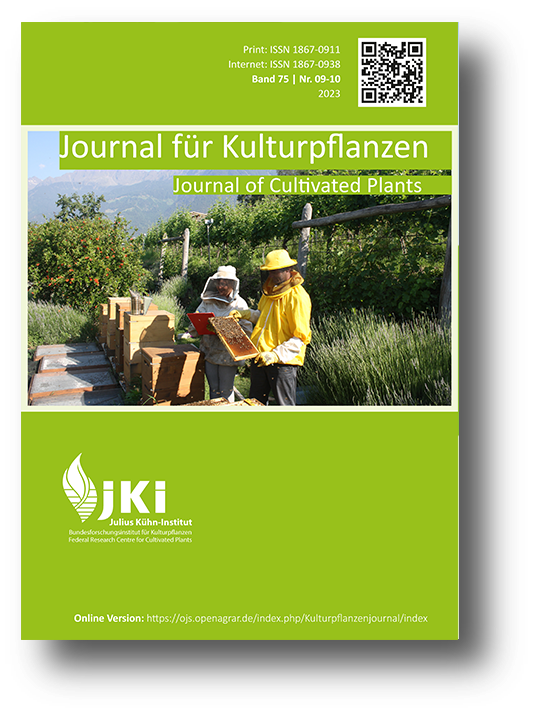rDNA analyses indicate that the introduced cryptic species Fomitiporia mediterranea is the causal agent for the dieback of grafted mop head acacias (Robinia pseudoacacia 'Umbraculifera')
DOI:
https://doi.org/10.5073/JfK.2023.09-10.03Keywords:
Global warming, invasive species, neomycete, Mediterranean elbowpatch crust, Phellinus, urban mycology, broad host range, white rotAbstract
An epidemic spread of the Elbowpatch crust (Fomitiporia punctata, Fungi) has been observed in recent years on deciduous woody plants (Wisteria floribunda, Platanus acerifolia, Robinia pseudoacacia) in Karlsruhe (Germany). Numerous grafted mop head locust trees (R. pseudoacacia 'Umbraculifera') are diseased or already dead. An rDNA analysis (marker: ITS) showed that it was by no means F. punctata but the morphological lookalike F. mediterranea, which probably migrated to Central Europe. This species was previously known in Germany mainly on Vitis vinifera. The symptoms caused by the fungus on locust trees are described and illustrated in detail. A distribution map of the two species for Karlsruhe is being drawn up. The discovery (of a herbarium specimen) of F. mediterranea on Corylus avellana collected in 1988 in Rheinland-Pfalz is the first record of the species in Germany. The question of when abouts the invasive species migrated to Germany is the subject of discussion.
Downloads
Published
Issue
Section
License
Copyright (c) 2023 The Authors

This work is licensed under a Creative Commons Attribution 4.0 International License.
The content of the journal is licensed under the Creative Commons Attribution 4.0 License. Any user is free to share and adapt (remix, transform, build upon) the content as long as the original publication is attributed (authors, title, year, journal, issue, pages).
The copyright of the published work remains with the authors. The authors grant the Journal of Cultivated Plants, the Julius Kühn-Institut and the OpenAgrar repository the non-exclusive right to distribute and exploit the work.







